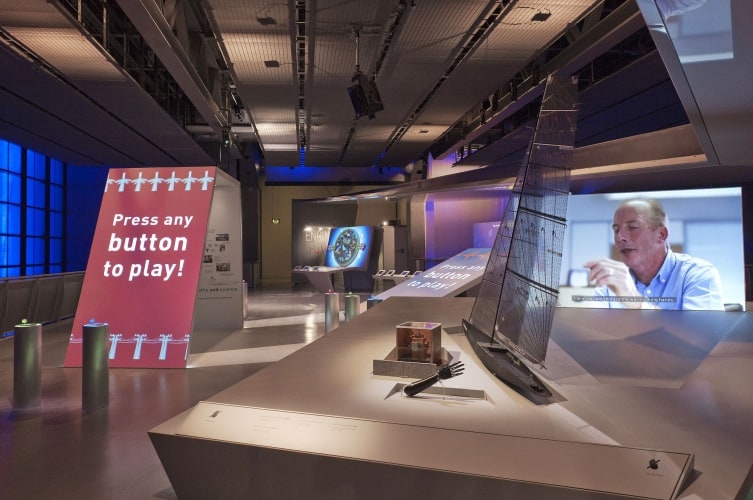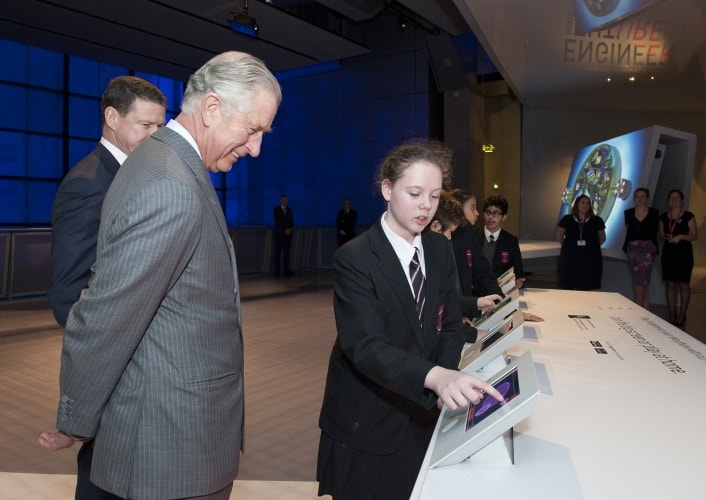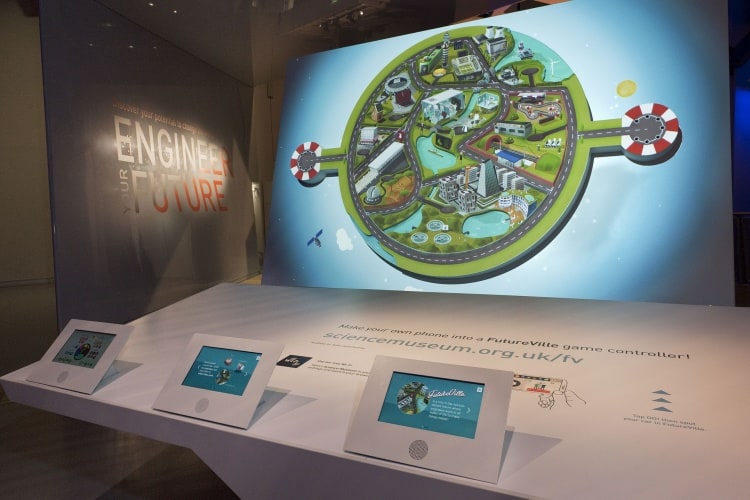The Science Museum is the place to go if you want to see massive steam engines, aircraft hanging from the ceiling, Stephenson’s Rocket and the Apollo 10 crew capsule. Inspiration, certainly, and an unrivalled view of scientific and industrial heritage; but it’s probably not where you’d expect to go for careers advice. For the next three years, however, visitors will be able to see Engineer Your Future, a special exhibition aimed at encouraging 11-15 year olds to consider a career in engineering.
The exhibition was opened yesterday by the Prince of Wales, who was in a reflective mood. He opened his speech by saying that British engineering was facing a skills crisis, that society had a mistaken view of engineering and that the best way to prosperity was through a healthy industry that made things. So far, so uncontroversial, but he than confessed that he was actually quoting a speech he’d made in 1979. ‘Nothing has changed in 40 years,’ Prince Charles noted, ‘except that now everyone is running around like headless chickens trying to put Humpty Dumpty back together again.’

Headless chickens seemed like a slightly unkind description of the team behind Engineer Your Future, as it is undoubtedly meticulously planned. ‘It is a departure for us, but we spoke to our stakeholders and the engineering institutions and it seemed that we are actually perfectly placed to mount something like this,’ said Emma Hedderwick, project leader for the exhibition. Organisations included ABB, BT, EDF Energy, National Grid and Network Rail have contributed to the exhibition.
Well over a million children visit the Science Museum every year, and they are in a receptive mood; it has the most pre-booked school visits of any museum in the country. ‘Teachers just don’t generally have access to this sort of information, but we can present it in a way which is suitable for our target audience and also offer extra links via our website so teachers, pupils and their families can find out more about the bits that really interest them. For visits that are coming here specifically, we’ve also organised information for teachers to use pre-visit and follow-up material.
The exhibition is organised around a series of displays which explain some of the key skills that engineers need in a very wide variety of jobs. ‘The idea is that the children would see these and if it’s a skill they already have or just something that they enjoy, it’d give them the idea that they could develop that as a job, ’ said Emma

Actual physical exhibits are sparse; in fact there are only four — a development model of an America’s Cup yacht, a model of a house designed to withstand tsunamis, a flood barrier and a prosthetic arm. These are positioned at the entrance to the gallery, where they are accompanied by a short film featuring the engineers who worked on these projects speaking about how they adapt designs towards their goals and why they find their jobs rewarding. ‘We know 11-year-olds won’t read long labels, but they will watch films, especially with animated material; and if you put text in that, they absorb it much better,’ Emma explained.
The rest of the gallery is occupied by a series of interactive games designed so that several players can participate at the same time. The ‘Rugged Rovers’ game, developed with input from Mars Rover engineer and friend of The Engineer Abbie Hutty, allows players to design planetary rovers, place and size wheels on their chassis, and then see how far they can travel along a simulated rocky surface. ‘It gets very competitive’, said Emma, ‘and we have a downloadable app so you can play at your leisure on tablets or smartphones.’
Another game consists of a grid of blocks containing sections of conveyor belt, which players rotate to create a system to take baggage from check-in desks to aircraft, placing scales and security apparatus at appropriate points. Another is a driving game, where players navigate a townscape picking up engineers and delivering them to appropriate zones — energy, entertainment, waste, transport and so on — to help the town to run. ‘The games are developed out-of-house,’ Emma explained. ‘We told the designers what we wanted players to get out of them, and they were developed accordingly. But what was really important is that they would appeal equally to boys and girls, in terms of content, apeearance and so on. Our play test groups contain slightly more girls than boys. The last thing we want is for boys to rush in, take over all the player spaces and leave the girls standing around.’

Each game station is backed with a display that explains the principles it explores, and shows actual engineers who use these skills in their jobs. The sectors depicted range from civil engineering, energy and space to wild animal tracking, and include people who work within large organisations and entrepreneurs. ‘We want to show that whatever you’re interested in, there’s an engineering career that can get you there,’ Emma said. ‘It’s important to see that it’s not all building sites and hardhats, and if, say, you want to work in medicine there are engineering careers that do that, you don’t have to be a doctor or nurse to make important contributions.’
Everywhere there are exhortations to study science and maths — not physics and maths, because at the younger end of the age range, pupils are studying integrated sciences. And to save space, there are few explanations of how maths in particular is used in engineering, although this information is available in internet links. ‘It’s designed to be the start of a journey,’ Emma said. ‘We can’t show everything, but the advantage of the games approach is that we can demonstrate the principles in a fun and engaging way, actually getting people involved, without getting bogged down in detail.’
Emma confessed that she was most looking forward to seeing the gallery crowded with children and getting their feedback. ‘The school groups here for the opening seemed to love it,’ she said.










Water Sector Talent Exodus Could Cripple The Sector
Maybe if things are essential for the running of a country and we want to pay a fair price we should be running these utilities on a not for profit...